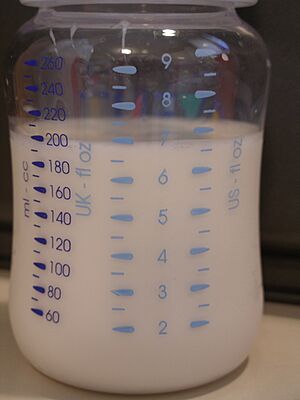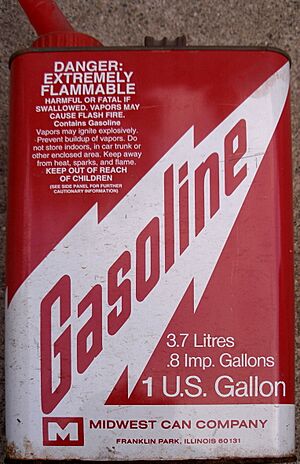Comparison of the Imperial and US customary systems facts for kids
The world uses different ways to measure things, like how long something is or how much liquid it holds. Two common systems are the Imperial system and the U.S. customary system. Both of these systems came from older English ways of measuring that were used a long, long time ago, even back in the Middle Ages! These old English units were a mix of what the Anglo-Saxon tribes used and some Roman units that arrived after William the Conqueror took over England in 1066.
Because they share this history, the Imperial and U.S. customary systems are quite similar. However, there are some important differences. The U.S. system is based on how English measurements were in the 1700s. The Imperial system, on the other hand, was officially set up in 1824, after the United States became independent.
Contents
Volume
One of the biggest differences between the two systems is how they measure volume (how much space something takes up).
In the American system, there are two kinds of gallons:
- A "wet" gallon for liquids (like milk or gasoline).
- A "dry" gallon for things like grains or fruit.
The Imperial gallon, used in places like the United Kingdom, is actually bigger than both the American wet and dry gallons. However, it's a bit confusing because the Imperial fluid ounce is slightly smaller than the American fluid ounce!
Here's a quick look at how some volume units compare:
| 1 U.S. fluid ounce | = 29.573 529 562 5 milliliters | ≈ 1.041 Imperial fluid ounces |
|---|---|---|
| 1 Imperial fluid ounce | = 28.413 062 5 milliliters | ≈ 0.961 U.S. fluid ounce |
| 1 liquid U.S. gallon | = 3.785 411 784 liters | ≈ 0.833 Imperial gallon |
| 1 Imperial gallon | = 4.546 09 liters | ≈ 1.201 liquid U.S. gallons |
| 1 dry U.S. gallon | = 4.404 842 803 2 liters | ≈ 0.968 Imperial gallon |
| 1 Imperial gallon | = 4.546 09 liters | ≈ 1.032 dry U.S. gallons |
Length
When it comes to length, the international yard is exactly 0.9144 metres. This specific measurement was agreed upon in 1959 by several countries, including the United States, Canada, the United Kingdom, South Africa, Australia, and New Zealand.
However, the United States still uses its older length units for some special purposes, like surveying land. For example, the U.S. survey foot is slightly different. It is exactly 36/39.37 of a meter.
Weight
There are also differences in how mass (or weight) is measured.
In Britain, people often use a unit called the stone. One stone is equal to 14 pounds. Eight stones make one hundredweight, which is 112 pounds. Twenty hundredweights make one ton. So, a British ton (also called a long ton) is 2240 pounds. This is very close to the tonne used in the metric system.
In the United States, people do not use the stone. They usually use a hundredweight of 100 pounds. This is sometimes called a short hundredweight. Twenty short hundredweights make one short ton.
Other pages



